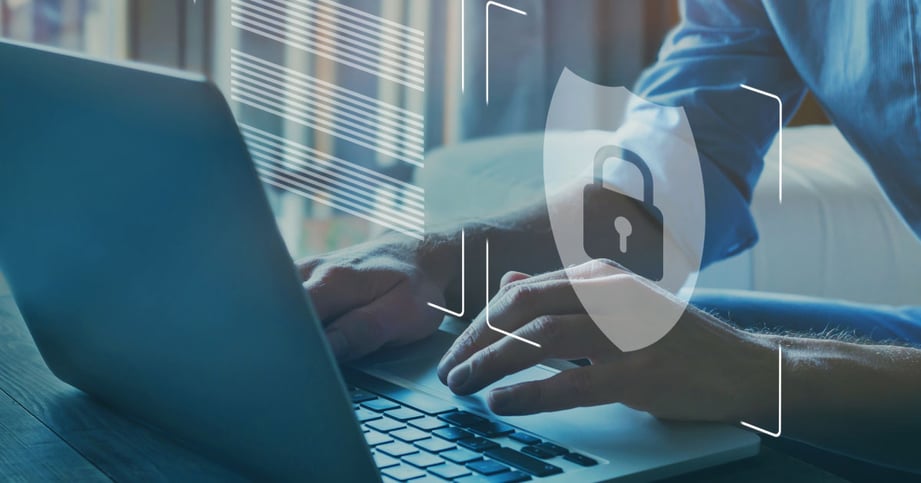A Security Operations Center (SOC) is an essential component in the world of managed IT services in Kelowna, providing a comprehensive approach to cybersecurity management. It serves as a centralized unit for monitoring, analyzing, and responding to potential security threats within an organization's IT infrastructure. This guide offers a detailed exploration of SOC functionalities, components, and the evolving landscape of cybersecurity operations, providing insights into building and operating an effective SOC.
Key Components of a SOC
Security Information and Event Management (SIEM) is the foundational component of a Security Operations Center (SOC). It involves the collection, analysis, and storage of log data generated by an organization's technology infrastructure. SIEM systems provide real-time analysis of security alerts generated by applications and network hardware. They enable security professionals to identify, categorize, and respond to security incidents more effectively. Additionally, SIEM tools aid in compliance reporting and the creation of security dashboards for a comprehensive overview of an organization's security posture.
Threat Intelligence
Threat intelligence plays a critical role in a SOC's ability to anticipate and mitigate potential cybersecurity threats. It involves the gathering and analysis of information on existing and emerging cyber threats from various sources, including open-source intelligence, dark web monitoring, and collaboration with industry peers. By leveraging threat intelligence, a SOC can proactively identify potential vulnerabilities and implement appropriate measures to prevent or minimize the impact of security breaches. It also assists in the development of effective security strategies and the enhancement of incident response capabilities.
Incident Response
Incident response is the structured approach taken by a SOC to address and manage security incidents effectively. It involves the identification, containment, eradication, and recovery from security breaches and cyber-attacks. A well-defined incident response plan ensures that the SOC can quickly and efficiently mitigate the impact of security incidents, minimizing potential damages and reducing downtime. This component typically involves the coordination of various teams, including IT, legal, and public relations, to manage the incident and communicate effectively with stakeholders and customers.
Forensic Analysis
Forensic analysis is a crucial aspect of a SOC's investigative process, focusing on the collection and examination of digital evidence related to security incidents. It involves the careful preservation and analysis of data to reconstruct the sequence of events leading to a security breach. By employing forensic analysis techniques, such as disk imaging, memory analysis, and network packet analysis, a SOC can uncover the root causes of security incidents and identify potential vulnerabilities in the system.
Security Analytics
Security analytics utilizes advanced data analysis techniques to identify patterns, anomalies, and potential threats within an organization's network. By leveraging machine learning and artificial intelligence, security analytics tools can detect suspicious activities and behaviours that might indicate a security breach. These tools provide the SOC with actionable insights, enabling them to respond proactively to potential threats and strengthen the organization's overall security posture. Moreover, security analytics help in the continuous improvement of security strategies and the enhancement of threat detection capabilities within the SOC.
Functions of a SOC

Managed IT services entail continuous monitoring and analysis of an organization's network and systems for potential security threats and vulnerabilities. SOC teams utilize sophisticated monitoring tools to keep a vigilant eye on network activities, identifying any unusual patterns or behaviours that could indicate a security breach. Through real-time monitoring and proactive analysis, the SOC can swiftly respond to emerging threats and prevent potential security incidents from escalating.
Incident Management
Incident management within a SOC involves the timely identification, assessment, and resolution of security incidents. Managed IT services ensure that the SOC promptly addresses any security breaches or cyber-attacks, minimizing the impact on the organization's operations and data. This includes implementing predefined incident response procedures, coordinating with relevant teams, and executing containment and recovery strategies to restore normalcy swiftly.
Vulnerability Management
Managed IT services focus on robust vulnerability management practices to identify and address weaknesses within an organization's network infrastructure. The SOC conducts regular vulnerability assessments and penetration testing to identify potential entry points for cyber threats. By proactively addressing these vulnerabilities through patches, updates, and security measures, the SOC enhances the organization's overall security posture and reduces the risk of successful cyber attacks.
Threat Hunting
Threat hunting is a proactive approach employed by managed IT services within the SOC to search for potential security threats that may have bypassed existing security measures. SOC analysts utilize advanced threat intelligence and detection tools to actively search for indicators of compromise and suspicious activities within the network. This proactive stance enables the SOC to detect and neutralize threats before they can cause significant damage or disruption to the organization's operations.
Reporting and Documentation
Effective reporting and documentation are integral components of managed IT services within a SOC. SOC teams maintain detailed records of security incidents, responses, and mitigation strategies for future reference and analysis. Comprehensive reports provide:
- Insights into the effectiveness of security measures.
- The status of ongoing threats.
- Recommendations for improving the organization's security infrastructure.
This documentation also aids in compliance requirements, enabling the organization to adhere to industry regulations and standards.
Building and Operating a SOC

Establishing a well-structured team is crucial for the efficient operation of a Security Operations Center (SOC). This includes defining roles such as SOC analysts, incident responders, threat intelligence specialists, and SOC managers. Each role is responsible for specific aspects of cybersecurity management, ranging from real-time monitoring to incident response and threat mitigation.
Infrastructure and Technology Requirements
A robust infrastructure and advanced technology are essential for the effective functioning of a SOC. This involves deploying state-of-the-art security tools such as Security Information and Event Management (SIEM) systems, threat intelligence platforms, and advanced analytics tools. Additionally, a secure network architecture and reliable data storage solutions are imperative for ensuring the integrity and confidentiality of sensitive information within the SOC.
Best Practices for Implementation
Implementing best practices is vital for the successful establishment and operation of a SOC. This includes defining clear protocols for incident response, conducting regular training sessions for SOC staff, and staying updated with the latest cybersecurity trends and threats. Creating a comprehensive documentation system for processes and procedures and establishing clear communication channels within the team and with other departments also contribute to the smooth operation of the SOC.
Challenges and Solutions
Building and operating a SOC comes with various challenges, including managing a high volume of security alerts, recruiting and retaining skilled cybersecurity professionals, and keeping pace with evolving cyber threats. Solutions involve:
- Implementing automated processes for handling routine tasks.
- Investing in continuous training and skill development for SOC staff.
- Fostering collaboration with external cybersecurity partners to stay abreast of the latest threat intelligence and industry best practices.
Additionally, regular assessment and upgrading of SOC infrastructure and technologies are essential to ensure the SOC's resilience and efficacy in addressing emerging cyber threats.
SOC Incident Response Framework

In managed IT services, understanding the incident response lifecycle is paramount. It involves comprehending the stages of preparation, identification, containment, eradication, recovery, and lessons learned. This comprehensive understanding enables the SOC to be well-prepared to handle potential security incidents effectively, minimizing their impact and preventing future occurrences.
Creating a Robust Incident Response Plan
Crafting a robust incident response plan is a critical step for a SOC under managed IT services. This plan outlines the specific steps to be taken in the event of a security breach, including the roles and responsibilities of each team member, communication protocols, and escalation procedures. A well-designed plan ensures a swift and coordinated response, reducing the potential damage and facilitating the restoration of normal business operations efficiently.
Implementing Incident Response Best Practices
Implementation of incident response best practices is vital for ensuring the effectiveness of the SOC's operations. This includes establishing a centralized incident management system, conducting regular drills and simulations to test the response plan's efficacy, and fostering a culture of continuous improvement and learning within the team. Moreover, integrating threat intelligence into the incident response process enables the SOC to anticipate and mitigate sophisticated cyber threats more effectively.
Continual Improvement and Lessons Learned
In managed IT services, continual improvement and learning from past incidents are essential for enhancing the SOC's incident response capabilities. Conducting thorough post-incident analyses, identifying areas for improvement, and updating the incident response plan accordingly are crucial steps in this process. Furthermore, fostering a culture of knowledge sharing and cross-departmental collaboration enables the SOC to leverage insights from previous incidents and proactively strengthen its security measures, thereby fortifying the organization's overall cybersecurity posture.
SOC Compliance and Regulations

A comprehensive understanding of various compliance standards is crucial for a Security Operations Center (SOC) to operate effectively. This includes familiarizing with regulations such as GDPR, HIPAA, and PCI DSS, which outline specific security and data protection requirements for different industries. Adhering to these standards is vital for maintaining the trust of customers, avoiding legal repercussions, and safeguarding sensitive data from potential breaches.
Importance of Regulatory Adherence
The importance of adhering to regulatory standards cannot be overstated within the context of a SOC. Compliance ensures that the organization meets the necessary security protocols, thereby fostering a culture of trust and transparency with stakeholders. It also demonstrates the SOC's commitment to protecting sensitive information, thereby enhancing its reputation and credibility within the industry.
Challenges in Meeting Compliance Requirements
Meeting compliance requirements can pose various challenges for a SOC. These may include keeping up with the evolving nature of regulatory standards, ensuring consistency across different operational processes, and allocating sufficient resources to implement necessary security measures. Additionally, the complexity of some compliance standards may necessitate specialized expertise, posing an additional challenge for many organizations.
Strategies for Maintaining Compliance
To maintain compliance effectively, a SOC must implement a range of strategies. These may involve conducting regular compliance audits, investing in robust data encryption and access controls, and establishing clear policies and procedures for data handling. Moreover, providing continuous training to SOC staff on the latest compliance protocols and fostering a culture of accountability and transparency can significantly contribute to the successful maintenance of compliance standards. Additionally, leveraging advanced compliance management software can streamline the process, ensuring that the SOC stays up-to-date with the latest regulatory requirements and industry best practices.
SOC Metrics and Performance Measurement

In managed IT services, defining key performance indicators (KPIs) is essential for evaluating the effectiveness of a Security Operations Center (SOC). These KPIs may include metrics such as mean time to detect (MTTD), mean time to respond (MTTR), and the number of security incidents handled within a specific timeframe. Monitoring these KPIs allows the SOC to assess its operational efficiency and make data-driven decisions to enhance its overall performance.
Establishing Metrics for Success
Establishing clear metrics for success is crucial for a SOC under managed IT services. This involves aligning performance metrics with the organization's overall cybersecurity goals and objectives. Metrics should be specific, measurable, achievable, relevant, and time-bound (SMART). This enables the SOC to track its progress effectively and ensure that its efforts contribute to the organization's broader security strategy.
Monitoring and Analyzing SOC Performance
Continuous monitoring and analysis of SOC performance are vital for identifying areas of improvement and addressing potential gaps in security operations. Regular assessment of performance metrics enables the SOC to detect any anomalies or inefficiencies promptly, allowing for timely corrective actions and adjustments to security protocols. Moreover, leveraging advanced analytics tools to interpret performance data can provide valuable insights into emerging security trends and potential vulnerabilities within the organization's infrastructure.
Continuous Improvement Strategies Based on Metrics
Utilizing performance metrics as a basis for continuous improvement is a key strategy within managed IT services. This involves leveraging insights from performance data to implement targeted training programs for SOC staff, upgrading existing security tools and technologies, and refining incident response procedures. Additionally, fostering a culture of innovation and adaptability within the SOC enables the team to proactively address emerging cybersecurity challenges and strengthen the organization's overall resilience against evolving threats.
SOC in the Future

The future of the Security Operations Center (SOC) is poised to witness the integration of cutting-edge technologies such as blockchain, quantum computing, and secure hardware. These innovations will bolster the SOC's ability to detect and neutralize advanced cyber threats more effectively. Additionally, the adoption of cloud-based security solutions and the proliferation of Internet of Things (IoT) devices will necessitate the development of robust security protocols and frameworks within the SOC to ensure comprehensive protection against potential vulnerabilities.
Evolving Threat Landscape
As the digital landscape continues to evolve, the SOC must remain vigilant against a continually evolving threat landscape. This includes preparing for sophisticated cyber threats such as AI-driven attacks, ransomware, and supply chain vulnerabilities. Anticipating these threats and proactively implementing preemptive security measures will be critical to safeguarding organizations' data and infrastructure in the future.
The Role of Automation and AI
Automation and artificial intelligence (AI) will play an increasingly pivotal role in the future of the SOC. These technologies will streamline routine security tasks, enhance threat detection capabilities, and enable faster incident response times. By leveraging automation and AI-driven analytics, the SOC can identify patterns and anomalies more efficiently, enabling quicker decision-making and proactive threat mitigation. Additionally, the integration of machine learning algorithms and predictive analytics will empower the SOC to forecast potential security risks and preemptively address them, thus significantly strengthening the overall cybersecurity posture of organizations.
innov8 – Digital Solutions

For optimal security solutions, leverage the expertise of innov8. With their array of services, including managed print services and managed IT services, they cater to diverse business needs. Explore their top-notch offerings, including commercial copy machines for sale, commercial printers for sale, large format printers for sale, commercial digital printers for sale, and wide format printers for sale or for short-term rentals. Additionally, they provide options like leasing office copy equipment, commercial laser printers for sale, copiers for rent, refurbished copier machines, and Canon office printers for sale. Let innov8 streamline your business operations with their cutting-edge products and solutions. Contact them today for a free consultation.


